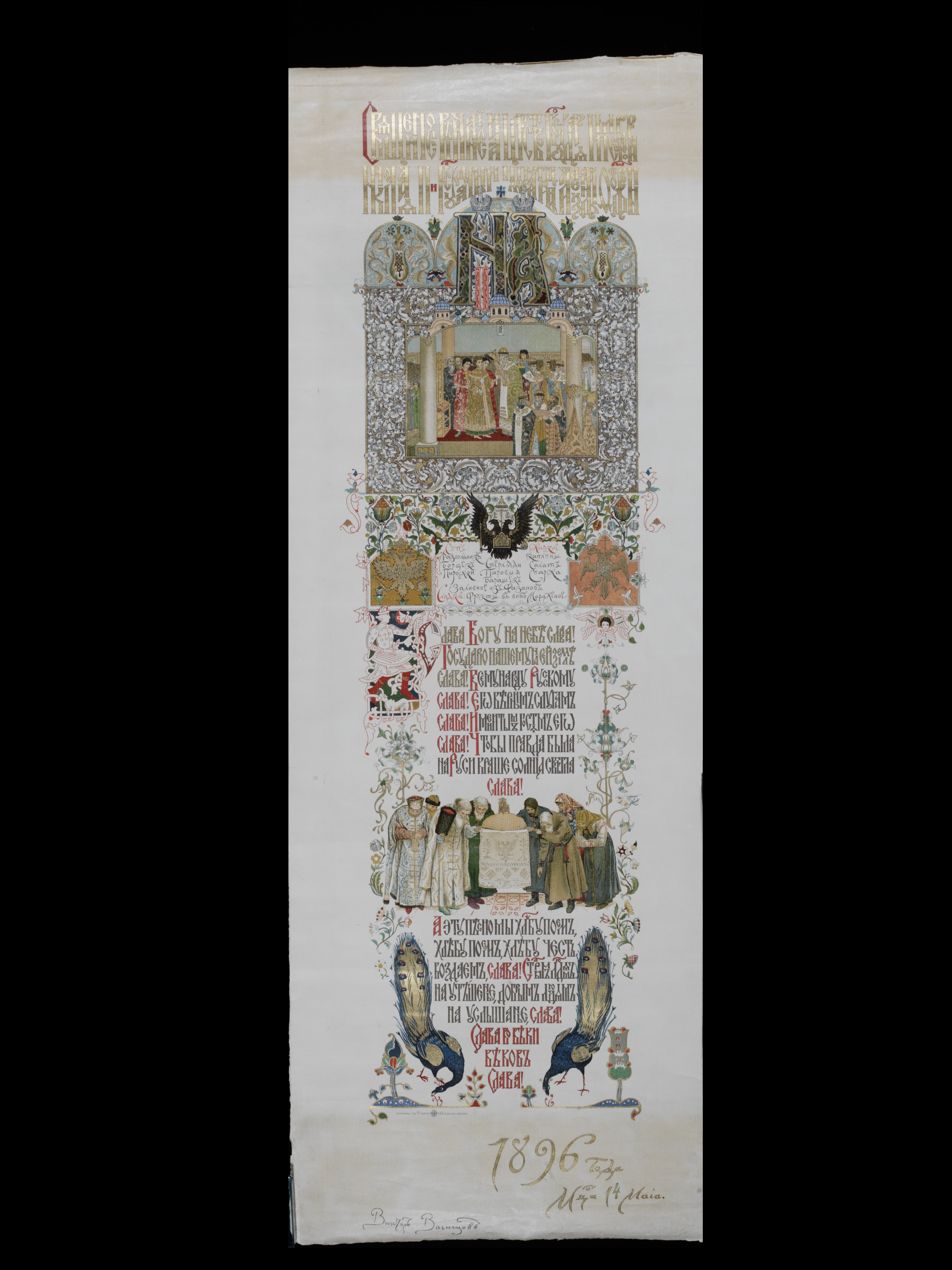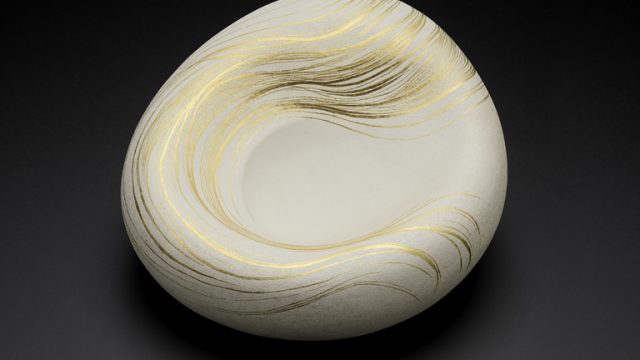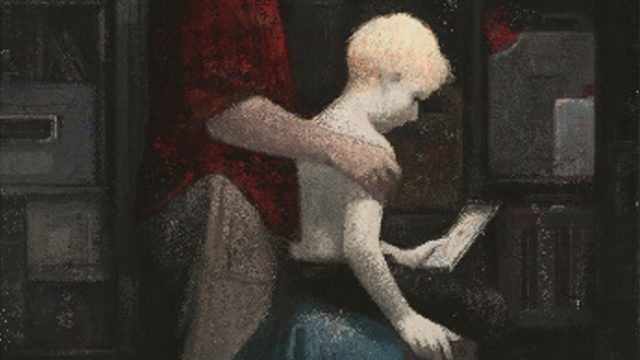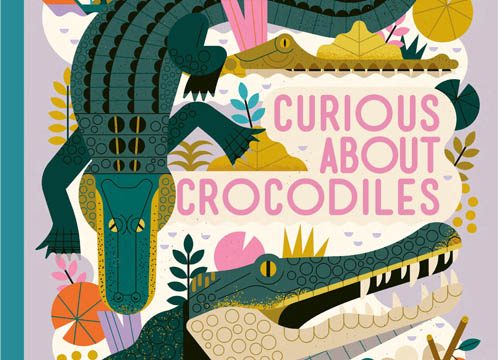When Nicholas II was crowned as Tsar in an elaborate coronation ceremony on 26 May 1896 he was not to know that his abdication in 1917 would end the Romanov dynasty that had ruled since 1613. In the Prints and Drawings collection we have a memento from Nicholas’ coronation – a beautifully decorated menu from the banquet that took place the evening after the event.
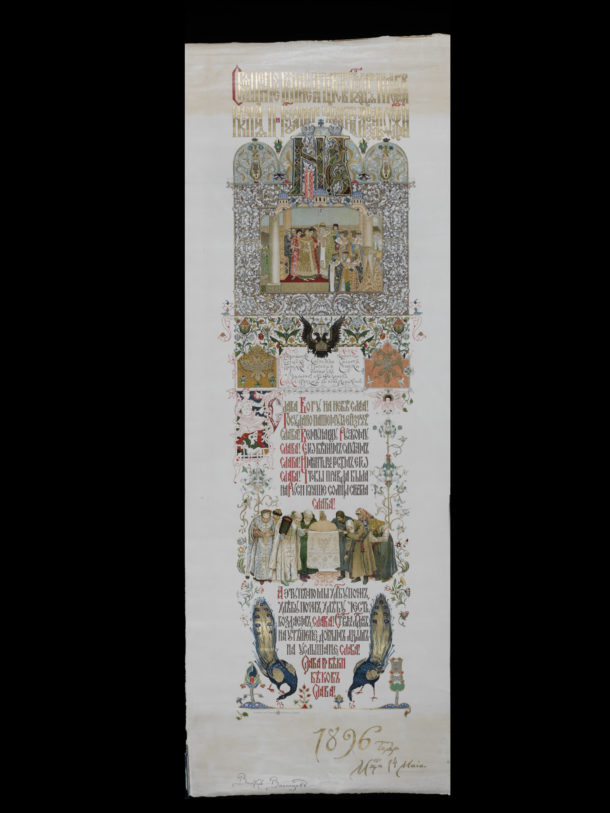
The menu has Russian lettering declaring the coronation of Nicholas and his empress Alexandra, then a large ornamental N and A with crowns perched above them. Below them is a depiction of the first Romanov coronation.
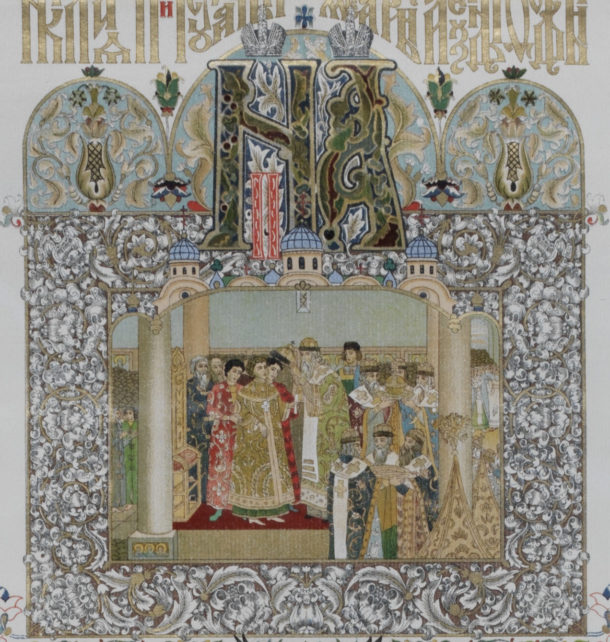
Another image lower down shows Nicholas’ subjects bearing bread and salt, the offering of which is part of many celebrations in Russia.
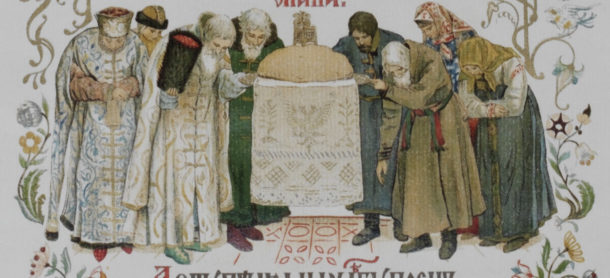
A copy of the menu would have been rolled and tied with a ribbon and laid at each table place. So what is eaten at a banquet for a tsar? In the section below you can see listed the dishes. They include:
Borsch and pepper-pot soup;
Turnovers filled with meat;
Steamed fish;
Whole spring lamb;
Pheasants in cream sauce;
Asparagus and Salad;
Sweet fruits in wine;
Ice-cream.
I’ve heard it said that no Russian meal is complete without soup (суп), so maybe it is not surprising that Russian cabbage soup ‘borsch’ (борщ) is being served. Piroshki (пирожки), turnover shaped pies, are also still a traditional Russian favourite.
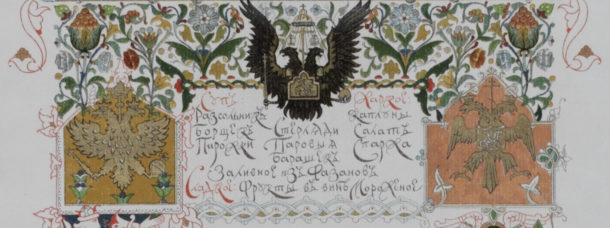
The menu also includes prayers for the Tsar. You can see the repeated ‘слава’ – glory – in red.
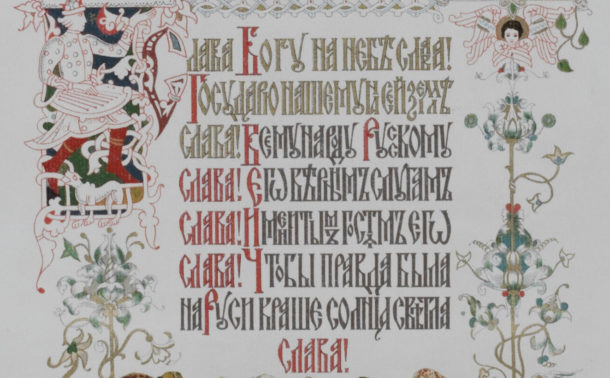
The decoration is in a traditional style harking back to the medieval period; this style appealed to Nicholas whose ideas about his role as absolute monarch and religious leader of Russia were very conservative. Aspects of the coronation, however, were very modern: it was photographed and filmed with the latest 19th century technology.
The menu was designed by Russian artist Viktor Vasnetsov (Ви́ктор Васнецо́в); his signature can be seen at the bottom.
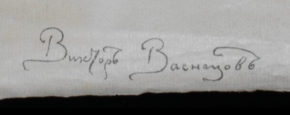
Vasnetsov was one of a generation of artists aiming to capture a Russian national style, looking back to medieval art, ancient folklore and traditional craft – not dissimilar to the Arts and Crafts movement in England. Vasnetsov spent time as the artist’s colony of Abramtsevo where traditional crafts such as furniture and textiles were produced by hand. As well as painting works, Vasnetsov designed buildings including a church and a bath-house at Abramtsevo, and the façade of the Tretyakov Gallery in Moscow.
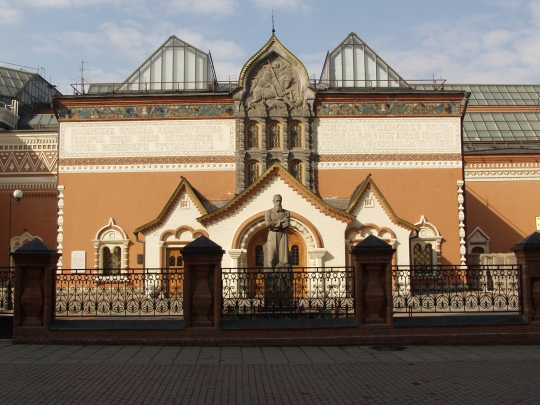
Nicholas’ coronation celebrations also included festivities for the people of Moscow. They would not have had a fancy menu, but were supplied with free food and drink and celebratory nick-nacks such as mugs and scarves on Khodynka Field in Moscow. The Tsar’s gesture became a disaster as surging crowds fell on the uneven ground and were crushed to death with reports of up to 3000 killed.
The writer Leo Tolstoy wrote a pamphlet on the coronation and the tragedy. His sympathy was clearly with the people.
“[They] had gone to Moscow, to try to get back a little of that wealth which year by year is constantly being drained from the villages to the towns, in taxes, rent and interest.”
His harsh and unforgiving view blamed the authorities:
“it was as though the evil spirits of greed, deception and selfishness which had caused the coronation to be planned and carried out, had become incarnate, and wrought their work of destruction visibly before the eyes of men, concentrating into a few minutes an amount of misery usually spread over months or years.”
Nicholas spent the evening at a ball, and this was seen as an unfeeling reaction to his people’s tragedy. These events cast a shadow over the beginning of his reign, contributing to a lessening of support among his people and, eventually, to the loss of the crown and his own life.
This year celebrates the 100th anniversary of the end of Tsarist rule in Russia, so it is fascinating to come across a memento of an all-powerful and confident monarchy that we know in hindsight was doomed to end in such a tumultuous upheaval. To find more hidden gems from history visit the Prints and Drawings Study Room.
